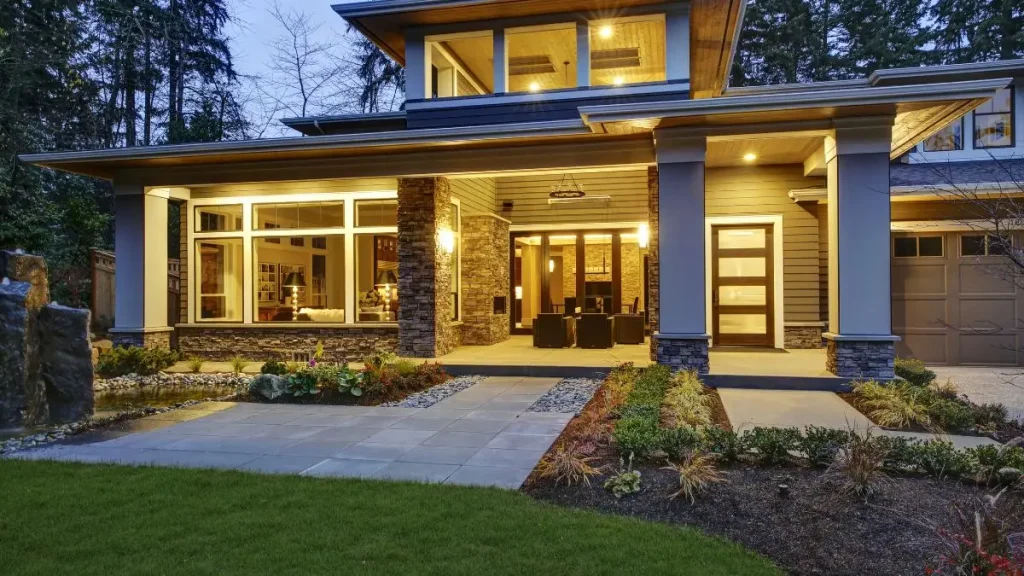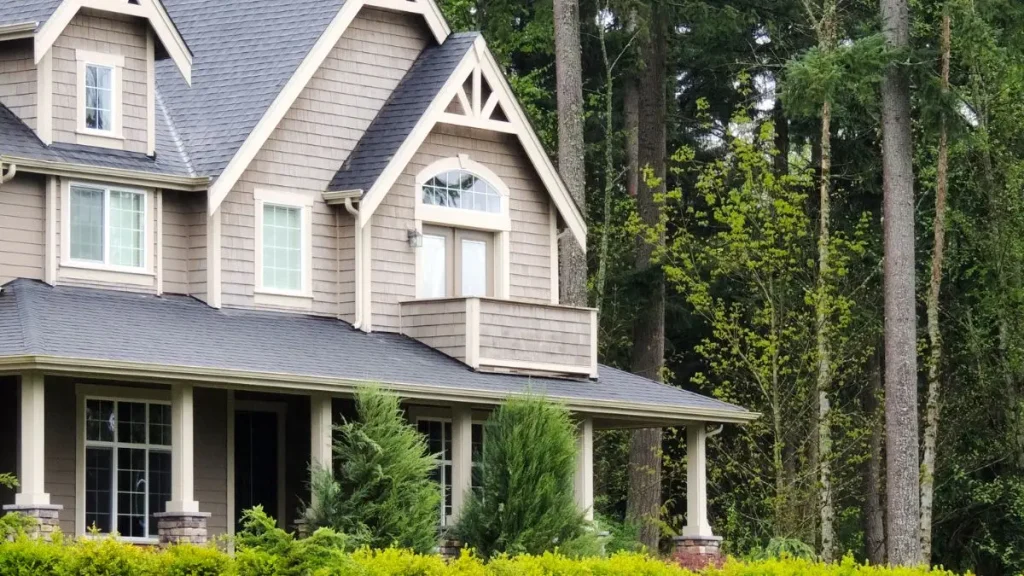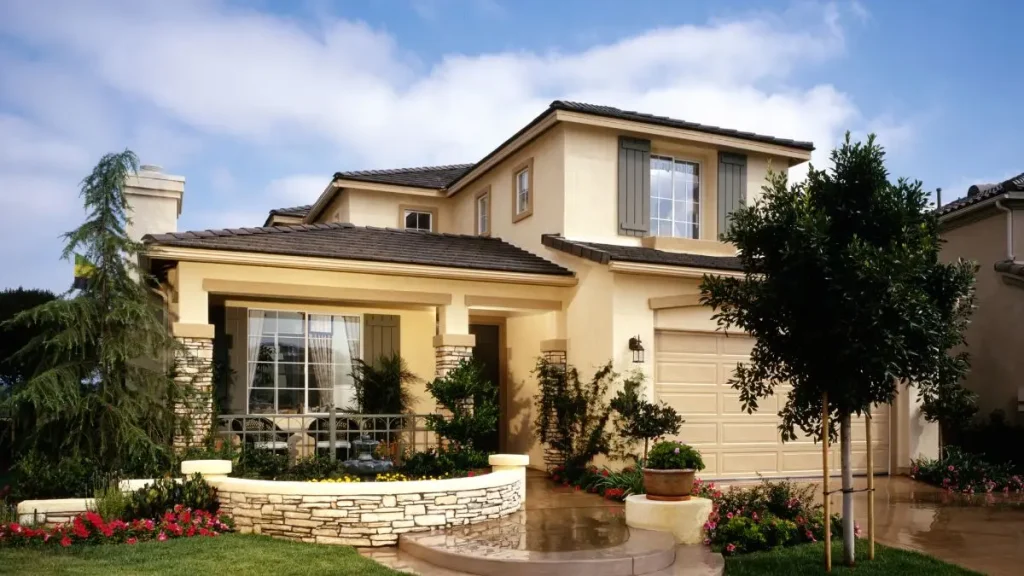6 Common Home Exterior Mistakes Designers Say You Should Stop Making
You know, the exterior of your home is like a giant billboard—it tells the world who you are, what you value, and a bit about your style. I’ve walked past countless houses where everything inside screams “carefully designed,” but the outside… well, it just doesn’t deliver. And honestly, that’s such a missed opportunity.
Over the years, I’ve noticed that even small details—like the size of a light fixture or the way your front door pops—can make or break the first impression. In this article, I’m going to walk you through the most common home exterior mistakes designers like me see all the time, and how you can fix them without overhauling your entire house.
By the end, you’ll know exactly what to tweak, where to focus, and how to make your home’s exterior finally feel intentional, balanced, and unmistakably “you.”
Going Too Small with Light Fixtures

If there’s one mistake that instantly jumps out to me on almost every street, it’s tiny light fixtures. I can’t tell you how many times I’ve seen homes with grand façades and gorgeous doors, only to have undersized lights make the whole exterior feel… off. It’s like giving a luxury car bicycle headlights—it just doesn’t balance.
Here’s the thing: your lights aren’t just functional—they’re a statement. If your garage doors are wide and prominent, the lights flanking them need to match that scale. I usually recommend fixtures that are at least 12 inches tall. For modern designs that hug the wall, you can even go as tall as 20 inches. The right size immediately brings balance and presence to your front façade.
Placement matters too. You don’t want a large fixture sticking out awkwardly or hanging too low, especially if your electrical wiring limits where it can go. Start by checking where your lights are already roughed in—if you have brick or stone, moving them can get tricky. But trust me, investing in the right fixture size and placement is one of the easiest ways to make your home look intentional and polished.
Practical Takeaway: Walk out to your curb, squint at your front lights, and ask yourself: do these look like they belong to this house, or are they lost in the design? If they feel small, oversized replacements are usually worth every penny.
Using Too Many Materials
I see this mistake all the time, and honestly, it drives me a little crazy. Some homeowners pile on brick here, stone there, maybe a touch of wood for accent, and it ends up looking chaotic instead of intentional. I call it “materialitis.”
Here’s the thing: less is almost always more. Pick a couple of materials and repeat them in thoughtful ways. Extend a brick around a corner or use stone in a larger area to make it feel structural rather than decorative. Even if it’s just a veneer, it should look like it belongs.
According to Better Homes & Gardens, Amanda Reynal, a designer, emphasizes that using a material just once can feel random. Repeating it gives cohesion and makes your exterior feel planned.
Practical Takeaway: Step back and squint at your home. Can your eye rest anywhere, or is it bouncing around? Streamline your materials and repeat elements for a calm, cohesive look.
Not Highlighting Your Front Door
Your front door is the single biggest opportunity to make a first impression. I always tell clients: make it a “wow” moment. Even a simple paint change can transform the look of your home.
If budget allows, consider upgrading to a larger door or adding sidelites. A wooden door with a rich stain or a bold, high-gloss color immediately communicates style and personality. It’s small, inexpensive, and has a huge impact.
Practical Takeaway: Look at your door as the centerpiece. Ask yourself: does it grab attention or fade into the background? If it fades, it’s time for a refresh.
Getting the Scale of Your Landscaping Wrong

Landscaping is tricky. Too big, and it swallows your house. Too small, and it makes the architecture feel trivialized. I’ve seen towering trees block a beautiful façade, or dozens of tiny flowers scatter attention.
The key is balance. Match plant size to your home’s scale, and let landscaping frame the structure rather than hide it. Think of your shrubs, trees, and beds as collaborators in your exterior design, not just filler.
I also share quick home upgrade tips and easy exterior fixes on my WhatsApp channel—you can hop in and get small actionable ideas while you plan your next project.
Practical Takeaway: Walk around your yard and ask: does this landscaping showcase the house, or is it competing with it? Adjust sizes and placements accordingly.
Overlooking the Path to the House
I love houses where the front yard feels like a journey. Unfortunately, most people ignore this. The path from the street to your door should gently guide visitors, creating an in-between space that prepares them for your home.
Use pathways, pergolas, and plantings to define zones. Porches help, too—they give a moment to pause and breathe before entering. It’s not just aesthetic; it’s emotional. A well-designed approach can make someone feel welcome the second they step onto your property.
Matching plant size to your home’s scale is key, and if you’re thinking about upgrading your outdoor areas, check out our 5 Outdoor Deck Renovation Ideas That Instantly Upgrade Any Home for inspiration.
Practical Takeaway: Walk the route from the street to your door. Does it feel inviting, or just functional? Little tweaks like a curved path or framing plants can make a world of difference.
Ignoring Your Existing Architecture
This one’s huge. I see homeowners trying to force a “trendy” style onto a home that just doesn’t support it. A black-and-white modern farmhouse on a Colonial? It rarely works.
The secret is to respect your home’s style first. Study examples of that architectural type and make enhancements within that framework. Refresh colors, fixtures, and finishes—but work with the bones you’ve got. It’s a lot easier, more elegant, and far more effective.
Practical Takeaway: Identify your home’s architectural style, research reference examples, and plan changes that enhance rather than fight your foundation.
Bonus Tip: Cohesive Material, Color & Lighting Strategy

Here’s something I tell every client: even if each element is great on its own, the magic happens when everything works together. Materials, colors, and lighting should feel like a team, not a random collection of choices.
Walk around your house and observe how the brick, stone, siding, and trim interact. Do the colors clash or harmonize? Do your lights highlight key features or vanish into the background? Coordinating these elements makes your home feel intentional, polished, and welcoming.
Coordinating materials and colors is important, and pairing it with seasonal care can make a big difference—our Seasonal Home Maintenance Checklist shows you how to keep your home looking fresh all year.
Practical Takeaway: Before starting any changes, take a step back and plan holistically. Small tweaks, like aligning the tone of your siding with your door color or upgrading lights to match materials, create a big impact.
Actionable Takeaways
Let’s summarize the real steps you can take right now:
- Lights: Scale them properly; make them part of the architecture.
- Materials: Repeat them thoughtfully; avoid “materialitis.”
- Front Door: Make it a statement; bold color or size matters.
- Landscaping: Match scale with your home; frame, don’t overwhelm.
- Pathway: Guide the visitor; create a welcoming approach.
- Architecture: Respect your home’s style; enhance, don’t fight it.
- Cohesion: Materials, colors, and lighting should feel like a team.
Even tackling one or two of these will make your home feel instantly upgraded. I promise—it’s not about spending more, it’s about planning smarter.
Small adjustments can save big costs long-term—our guide on 5 Weatherproofing Upgrades That Save You Thousands walks you through cost-effective improvements that last.
Final Thoughts
Looking at your home’s exterior with fresh eyes can be surprisingly revealing. I’ve walked past countless houses where a small tweak—like properly scaled lights or a bold front door—would have completely transformed the first impression. It’s not about a full renovation; it’s about intentional choices that make your home feel balanced, welcoming, and undeniably you.
Remember, every element—from materials and colors to pathways and landscaping—tells a story. When they work together, your home doesn’t just look good; it communicates style, care, and personality. And that’s something no curb appeal guide can teach fully—you have to see it, feel it, and tweak it yourself.
So take a walk around your home, notice what jumps out at you, and start with one change that will make the biggest impact. Trust me, once you get it right, even small adjustments will create a sense of harmony that’s impossible to ignore.
What’s one thing on your home’s exterior you’ve been meaning to fix or upgrade? I’d love to hear what you tackle first—it might just give someone else the inspiration to take the plunge.
If you want more detailed guides on upgrading your home’s exterior and outdoor spaces, check out our Home Improvement section.
Disclaimer: The advice in this article is for informational purposes only. Always consult a professional before making major changes to your home’s exterior. Results may vary depending on your home’s style, location, and materials.


